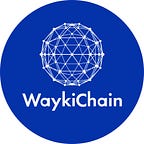WaykiChain Looks into Future | Blockchain Application Scenarios in Supply Chain Finance
Supply chain finance, is a set of solutions that in addition to providing finance and settlement services to customers, can also provide loans to their suppliers, advance payment and inventory financing to their distributors.
To put it simply, banks connect core companies with their upstream and downstream companies, provide them with flexible financial products and services, and use funds to increase liquidity of the supply chain.
In current supply chain financial system, the supply chain of a specific commodity includes purchasing raw materials, producing intermediate and final products, and selling to consumers, thus making suppliers, manufacturers, distributors, retailers and consumers link on a chain.
But at present, supply chain finance also faces some major problems mainly in the following three aspects:
- It’s difficult for SMEs on the supply chain to finance due to high cost;
- The use or transfer of commercial drafts and bank drafts is limited;
- The supply chain financial platforms are difficult to prove their qualification, resulting in high cost of capital control.
Blockchain technology is a highly secure, irreversible ledger that is open to all Internet users, especially for applications with complex intermediate and asymmetric information. So for the above pain points, what changes can blockchain technology bring to supply chain finance?
1. With blockchain technology, all transaction behaviors of SMEs in the supply chain related to the core companies can be automatically and efficiently recorded; at the same time, the records have been automatically verified its authenticity by all nodes. All companies on blockchain can quickly raise funds based on relevant transaction records.
2. Banks and core companies can build a consortium chain for all member companies on the supply chain to use. Taking advantage of blockchain’s function of multi-party signature and irreversibility, to transfer of creditor’s rights can easily be achieved with multi-party consensus. At the same time, banks can also trace the transactions of each node and sketch out visualized transaction flow chart.
3. Blockchain is a “Trust Machine” with characteristics of traceability, consensus, and decentralization, and the data on blockchain is time-stamped. So blockchain can provide an absolutely credible environment, reduce the cost of risk control for funds, and solve the bank’s doubts about the authenticity of information.
4. Due to the openness and traceability of blockchain technology, manual intervention can be greatly reduced. Paperwork will be programmed and digitized. In blockchain system, all parties can share files using a decentralized ledger.
5. Through smart contracts, payments will be automatically completed based on scheduled time and preset result, improving efficiency and largely avoiding manual errors. According to McKinsey, application of blockchain technology in supply chain finance business on a global scale enables banks to avoid the loss of $100 million to $1.6 billion due to operational risks.
Website: https://www.waykichain.com/
Telegram: https://t.me/wiccofficial
Twitter: https://twitter.com/wayki_chain
Facebook: https://www.facebook.com/waykichainofficial/
CMC: https://coinmarketcap.com/currencies/waykichain/
Email: WaykiChain@outlook.com
